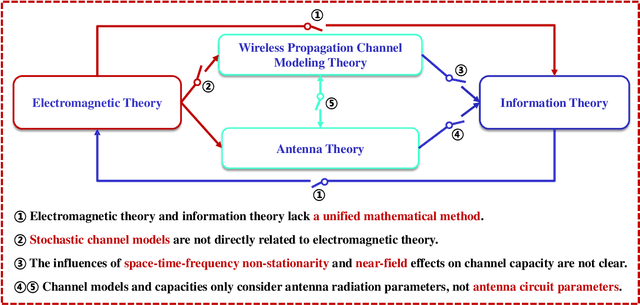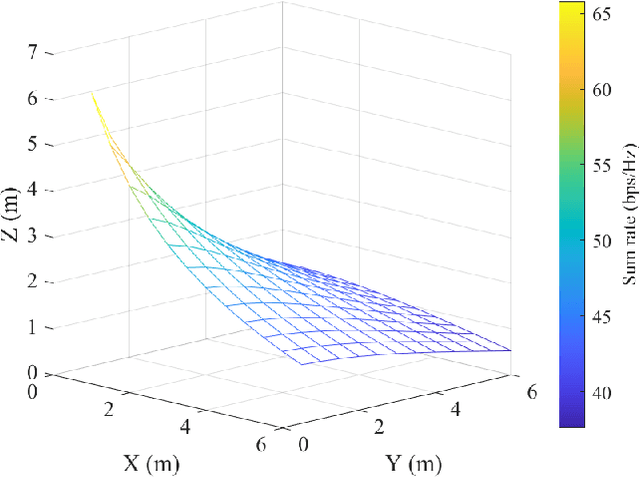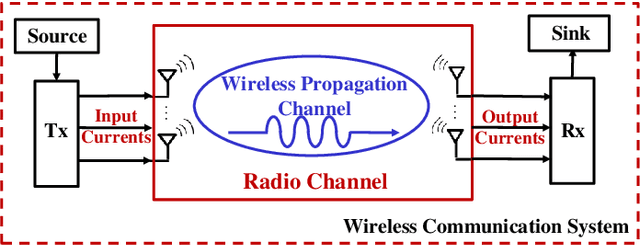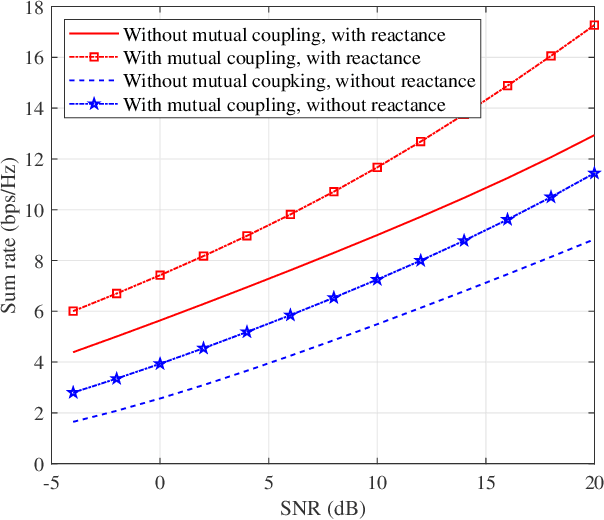Electromagnetic Information Theory: Fundamentals and Applications for 6G Wireless Communication Systems
Paper and Code
Jan 17, 2024



In wireless communications, electromagnetic theory and information theory constitute a pair of fundamental theories, bridged by antenna theory and wireless propagation channel modeling theory. Up to the fifth generation (5G) wireless communication networks, these four theories have been developing relatively independently. However, in sixth generation (6G) space-air-ground-sea wireless communication networks, seamless coverage is expected in the three-dimensional (3D) space, potentially necessitating the acquisition of channel state information (CSI) and channel capacity calculation at anywhere and any time. Additionally, the key 6G technologies such as ultra-massive multiple-input multiple-output (MIMO) and holographic MIMO achieves intricate interaction of the antennas and wireless propagation environments, which necessitates the joint modeling of antennas and wireless propagation channels. To address the challenges in 6G, the integration of the above four theories becomes inevitable, leading to the concept of the so-called electromagnetic information theory (EIT). In this article, a suite of 6G key technologies is highlighted. Then, the concepts and relationships of the four theories are unveiled. Finally, the necessity and benefits of integrating them into the EIT are revealed.
 Add to Chrome
Add to Chrome Add to Firefox
Add to Firefox Add to Edge
Add to Edge